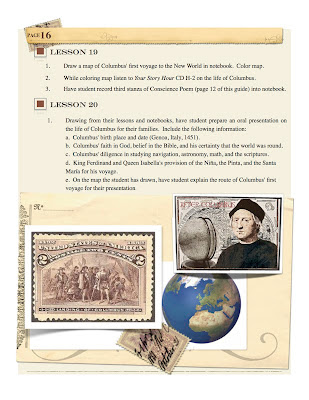2012 marks the 600th anniversary of the birth of Joan of Arc! This fascinating young woman captured the passions and imaginations of people in her own day and continues to do so. As someone so young, she was a mere 17 years old when she first led the troops of France against England, her legacy has long outlived her and continues to grow. Both fervently admired and coldly ridiculed, Joan's life continues to be documented, commented upon, written about, and even diagnosed. On one side she's deemed a hero, others see her as deluded but inspiring, film versions have given us a character who is bizarre and out-of-touch, paintings often portray a dreamy looking pale-faced girl gazing towards the heavens while others show a strong military leader rushing into battle. It seems her place in history will always stir up controversy and speculations, but to millions of boys and girls, she is one of those historical figures that inspires.
A woman of fervent faith and grand vision her life story captures young minds–it doesn't get much better than an illiterate girl turning the tide of a bloody, century-long war. As a child, I remember first reading about Joan and being fascinated by every aspect of her life; her visions, the passion, her ability to inspire courage in the men she led into battle. I could just imagine her charging into the fray atop her brave horse, armour gleaming. It struck me that her simple view of what was right cut through all the intrigue and politicking and lobbying that took place in the Dauphin's court, paralyzing the young, weak ruler. Joan had seen firsthand the effects of this horrific war. She was a peasant's daughter and lived through frequent raids on her village. She saw her hometown burned to the ground by English soldiers eager for booty. Guided by her visions and voices, she was determined to bring this injustice to an end. The leaders of France, concerned mainly with their own well being, were continually switching sides, vying for power, and undermining the Dauphin, a character who failed to inspire anyone. They were not bearing the brunt of the war like the people in Joan's village. When Joan comes on the scene she is not acting out of selfish ambition, she simply wants what is right and just.

If you want to learn more about Joan, there are several fantastic biographies on her life available at BFB. Each of these books goes beyond the popular portrayals that have been handed down through history and give us a picture of a very complex young woman. My personal favorite is
Joan of Arc by Mark Twain. It is difficult to imagine the author known for Huckleberry Finn and Tom Sawyer tackling the biography of this a girl living six hundred years ago, but Twain accomplished the feat with grace and heart. He spent twelve years of his life in research and writing and it is said that he considered
Joan of Arc to be his greatest work. At 452 pages this is an undertaking, but it is well-worth ones time. A great family read-aloud if you have older children, teens also love this book. And we've known a few moms and dads who have mysteriously disappeared for hours when they picked up this tome.
For junior high readers,
Beyond the Myth takes young readers deep into the details of Joan's life. As alluded to in the title, there is a lot of mythology that surrounds Joan but this book rebuilds Joan's life story with remarkable research and is based on first hand accounts. Readers will learn about the young heroine's struggles with convincing the Dauphin of her worthiness, they'll read about her visions, battles, capture and interrogation. Well-written, historically accurate, Brooks shows respect for Joan by fleshing out the details of a young woman who can often be portrayed as flat and peculiar.
And for readers in 4th-7th grade, check out
Joan of Arc, Warrior Saint by Jay Williams. This biography is a great choice for introducing your middle school students to Joan. It provides a well-rounded historical biography without the fluff so common Joan of Arc biographies written at this level. Readers will begin in her little village of Domrémy, France and follow Joan as her life takes her far beyond the small world of her birth.
What better way to celebrate the sexcentenary of Joan's birth that learning more about her fascinating life? And, if you haven't already, be sure to enter our
giveaway where you'll have a chance to win two free downloads of our study guides!













.jpg)




